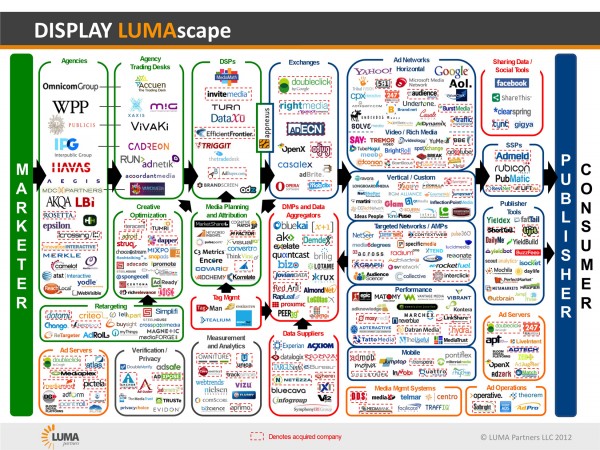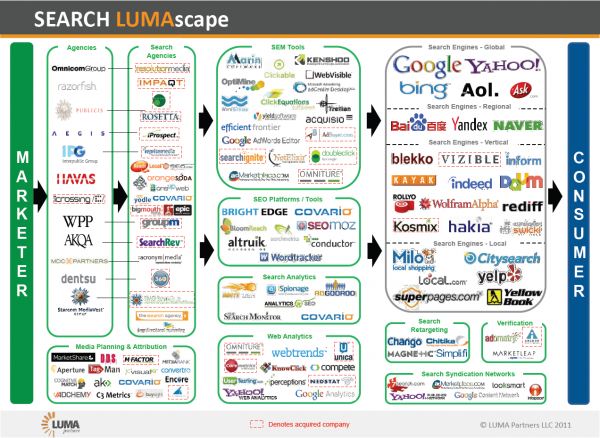Part 2: A Bird’s-Eye View Of The Search & Display Lumascapes
Welcome to Part 2 of the “A Bird’s-Eye View of the Search and Display Lumascapes.” In Part 1 last month, we covered two main topics: There is no à la carte targeting data in SEM Display is not catered to the long tail My third topic is an important one; it encompasses both the defining […]
Welcome to Part 2 of the “A Bird’s-Eye View of the Search and Display Lumascapes.” In Part 1 last month, we covered two main topics:
- There is no à la carte targeting data in SEM
- Display is not catered to the long tail
My third topic is an important one; it encompasses both the defining similarities and differences in the operation and infrastructure of search and display landscapes: display looks like search.
This is an extension of my last point in the previous article, which explained that display is not catered to the long tail. However, since search caters to the long tail, it is, by design, a one-stop shop. My previous point highlighted the various components needed to execute a display buy vs. a search buy.
The one thing we need to note is that search engines incorporate a lot of the tools that are classified as “third party” in display.
For example, in the display Lumascape, there is an entire category devoted to creative optimization. In search, the creative is optimized automatically by the search engine.
At the end of the day, search engine functions mirror those of an ad exchange, DSP, creative optimization company, and, in some cases, media planning and analytics. These components, unlike in display, are built into one solution.
Another way that search acts like a one-stop shop is for purchase intent. In display, third-party data is used to determine purchase intent and consumer preference, and those insights are then bundled with advertising impressions.
In search, the purchase intent is coming from a search, and then the ads are being shown directly in the results. The engine takes care of the bundling, as opposed to display, where the buyer is responsible.
Looking deeper into the similarities and the core differences, it has become glaringly apparent that display is looking more like search. While the infrastructure is built differently, the components needed to buy auction-based media don’t change very much.
Display appears more convoluted than search simply because there’s more flexibility. With greater freedom comes more choices, and picking the right mix of vendors, in-house technology and audience insight is the key to success in both the search and display spaces.
There is no perfect line of communication with consumers, even if they are customers (or not). Whether in search or display, marketers of all sizes should be thinking about their media channels from the audience perspective.
Think email is easy? Try dealing with a CRM or mailing company and then making smart product recommendations. Social? If you can tell me the dollar value of a Facebook Like, I’ll agree. Even if you have consumers on your site this very moment, you’re probably trying to incorporate offline purchase data and landing page optimization while gathering data, all at once.
The overarching theme from my three observations below highlights the benefits of both the search and display marketplaces.
- There is no à la carte targeting data in SEM
- Display is not catered to the long tail
- Display looks like search
It’s clear that the data targeting opportunities are greater in display and that search will continue to reign in the long tail market. What is unclear is how these two channels will look in five years or ten years.
Will display continue to evolve and look more like search? Try morphing your own display and search lumascape to see where you think the industry is headed.
Opinions expressed in this article are those of the guest author and not necessarily Search Engine Land. Staff authors are listed here.
Related stories

